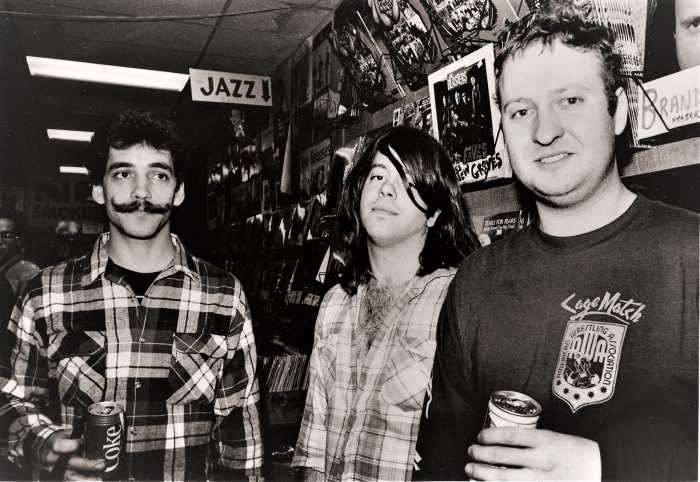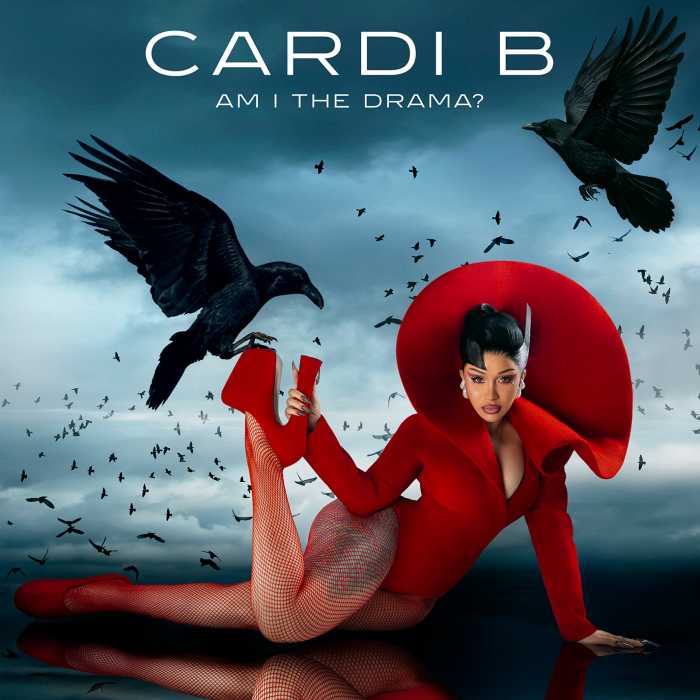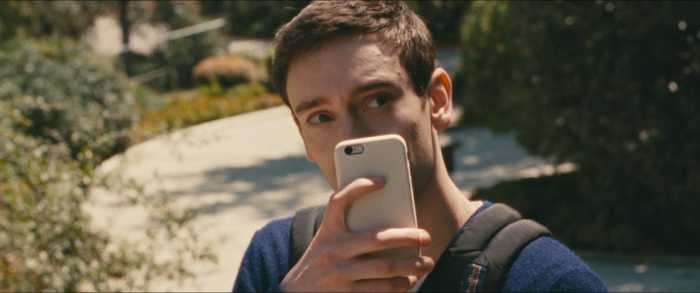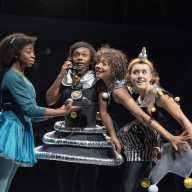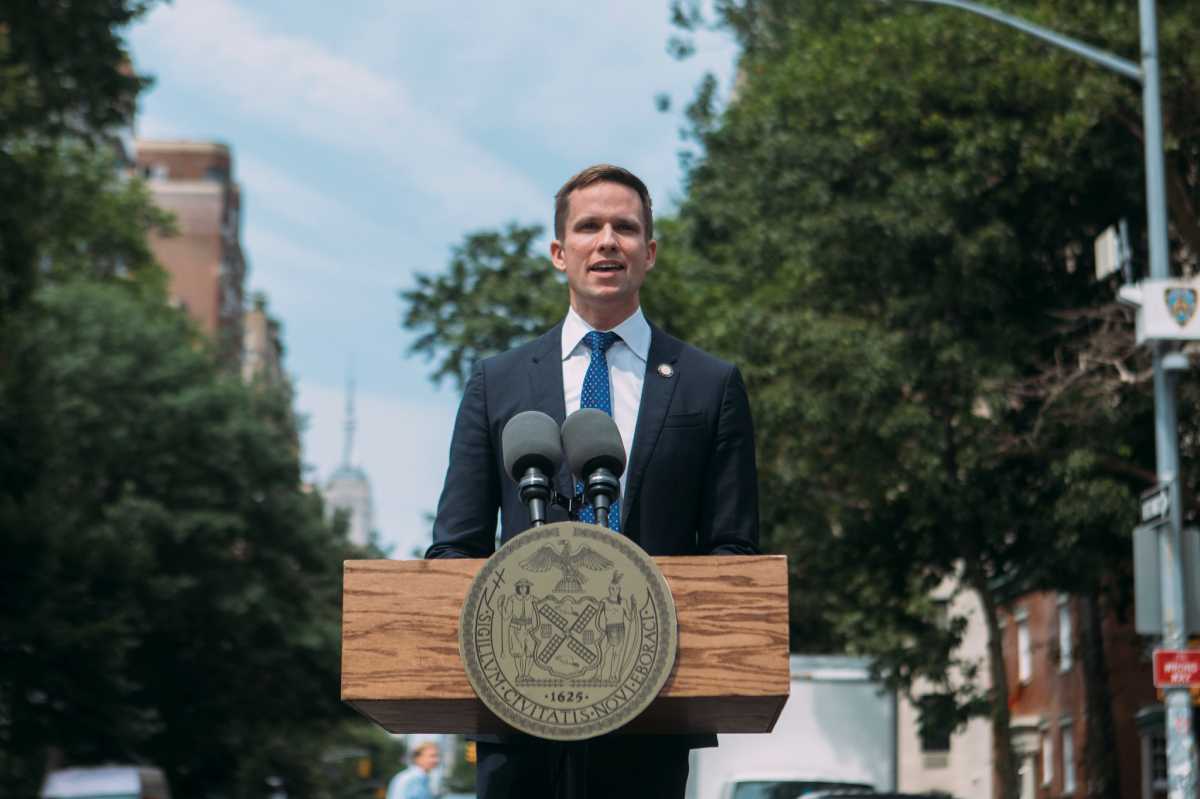This month, Gay City News reviews the latest albums by bi indie pop star Clairo and the eclectic queer, non-binary singer and rapper Lava La Rue.
Clairo | “Charm” | Virgin | July 12th
Clairo’s “Essentials” Apple Music playlist sounds like a compilation, with her voice the only consistent element. Once she began making albums, she leaped from the bedroom pop that initially found a large audience to more polished production. The sound of her third album, “Charm,” is attractive, but it’s all concept: a simulation of ’60 baroque pop and ‘70s soft rock.
All along, Clairo’s music had a problem with busy arrangements and highly detailed production that don’t actually contribute to her songs: take the blast of noise in the middle of her 2018 hit “Sofia” or the quasi-funk synthesizers of “Sexy To Someone.” Even at their loudest, the drums on “Charm” are thin and tinny. She got her sound down on her second album, “Sling.” Despite its tendencies towards pastiche, the arrangements were spare enough to let her voice resonate, while the songwriting was genuinely unpredictable. Although “Nomad,” “Terrapin,” and “Slow Dance” achieve a wistful elegance, the other songs on “Charm” don’t support their lyrics’ emotions much. They wander off in odd directions without fully developing. Keyboards drone through “Echo” till the song ends. The production relies too heavily on similar instrumentation, especially Mellotron (a proto-sampler keyboard developed in the ‘60s) and piano. While individual songs can be appealing, “Charm” leads them to run together. Among indie musicians working in this lane, Weyes Blood mines a similar sound with more personality.
Clairo may feel trapped by the preconceptions about her early music, which went viral on YouTube, and the bedroom pop label. (Many of her critics ignore her actual music in favor of dismissing her because of her father’s wealth and job as a marketing executive.) Cheaply recorded songs like “Pretty Girl” and “Flamin’ Hot Cheetos” seemed ultra-contemporary, if not chronically online, back then. Starting with her debut album “Immunity,” she’s moved away from the laptop, taking advantage of a full recording studio and improving as a singer. “Sling” and “Charm” suggest a desire to prove she’s a real singer/songwriter in the vein of Carole King, Paul McCartney, Brian Wilson and Laura Nyro. (The piano chords and melody of “Thank You” simulate a King song from the early ‘70s.) She now seems preoccupied with nostalgia, without adding much to the traditions of folk music or baroque pop.
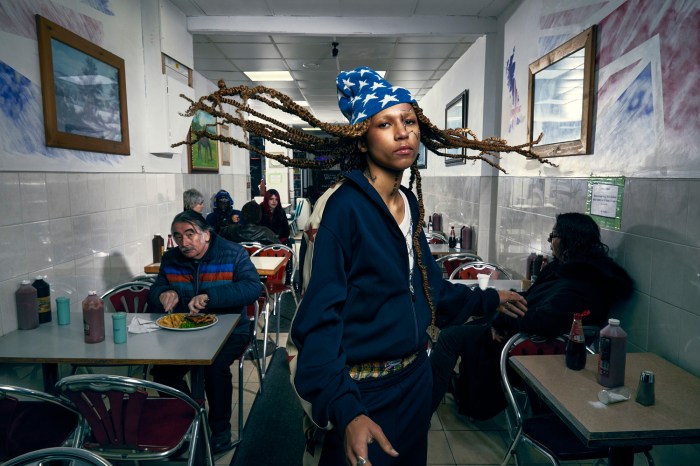
Lava La Rue | “Starface” | Dirty Hit | July 19th
“Starface” is science fiction that turns to the ‘70s for help envisioning the future. It combines elements of David Bowie’s “The Rise and Fall of Ziggy Stardust,” a concept album about a bisexual alien rock star, with Parliament-Funkadelic’s Afrofuturist mythology. La Rue’s Starface is a lesbian singer from outer space. The album resists genre categorization. It mines several sources — classic rock for acoustic guitars, funk for basslines and synthesizers, hip-hop for breakbeats — but places them in conversation in a way that seems fresh. This synthesis reflects La Rue’s fondness for Beck and Gorillaz. “Starface” is “indie” without being easily pinned down.
Although La Rue’s been releasing music for six years, “Starface” is intended as a calling card for a new audience. The production is full. Even if the drums are programmed, they’re crisp. “Manifestation Manifesto” sports a massive synth earworm for a chorus. Intros and interludes, like the 30 seconds of strings which launch the album, add cinematic touches. (“Friendship’s Death 1987” samples Tilda Swinton’s voice from an experimental ‘80s sci-fi film.) “Starface’s Descent” integrates acoustic guitar and orchestration.
While “Starface” isn’t a hip-hop album, “Manifestation Manifesto” moves from rapped verses to a sung chorus. La Rue’s a versatile vocalist, skilled at both. As part of the collective Nine8, a community-driven ethos comes across on “Starface.” The album features seven solo guests, as well as the entirety of Nine8. Lorenzo RSV’s anguished verse steals the show on “Flourescent/Beyond Space.” Even when they’re the only performer on a song, they alter their voice to expand its possibilities, pitching it down on “Humanity.”
“Starface” uses allegory to describe La Rue’s own ambitions and experience. “Humanity” brings an alien’s perspective to a woman descending into crack addiction, observing, “so many humans, and where’s the humanity?” “Aerial Head” pictures the character discovering the seductions of the media and consumerism, struggling to resist them but failing: “Ignorance softly embrace me/She’s a gift and a curse/And I’ll proceed this world untainted/Famous last words.”
La Rue never merely dabbles with any of the sounds they use. Too often, genre-agnostic music utilizes watered-down versions of its influences. If La Rue wanted to be a full-time rapper, they’d be a first-rate one. “Starface” may draw from several directions, yet it merges them into a recognizable sound of its own. They take advantage of a freedom from genre constraints Black artists have often been denied: they’re a descendant of Janelle Monae and Prince, as much as Bowie. “Starface” keeps its central conceit at arm’s length: many songs have nothing to do with its sci-fi imagery. But it mines both the past and future to create a full picture of the present.


